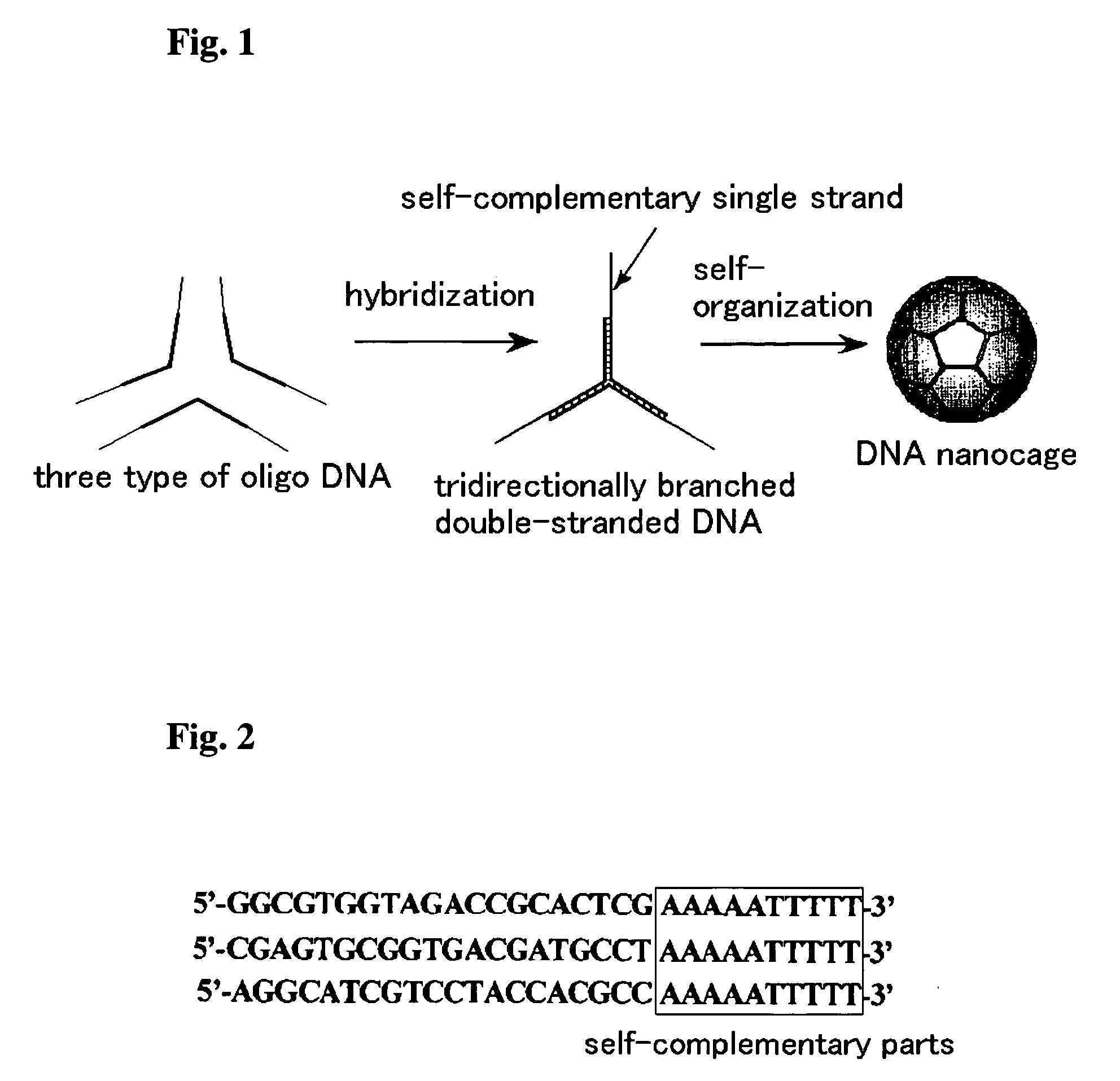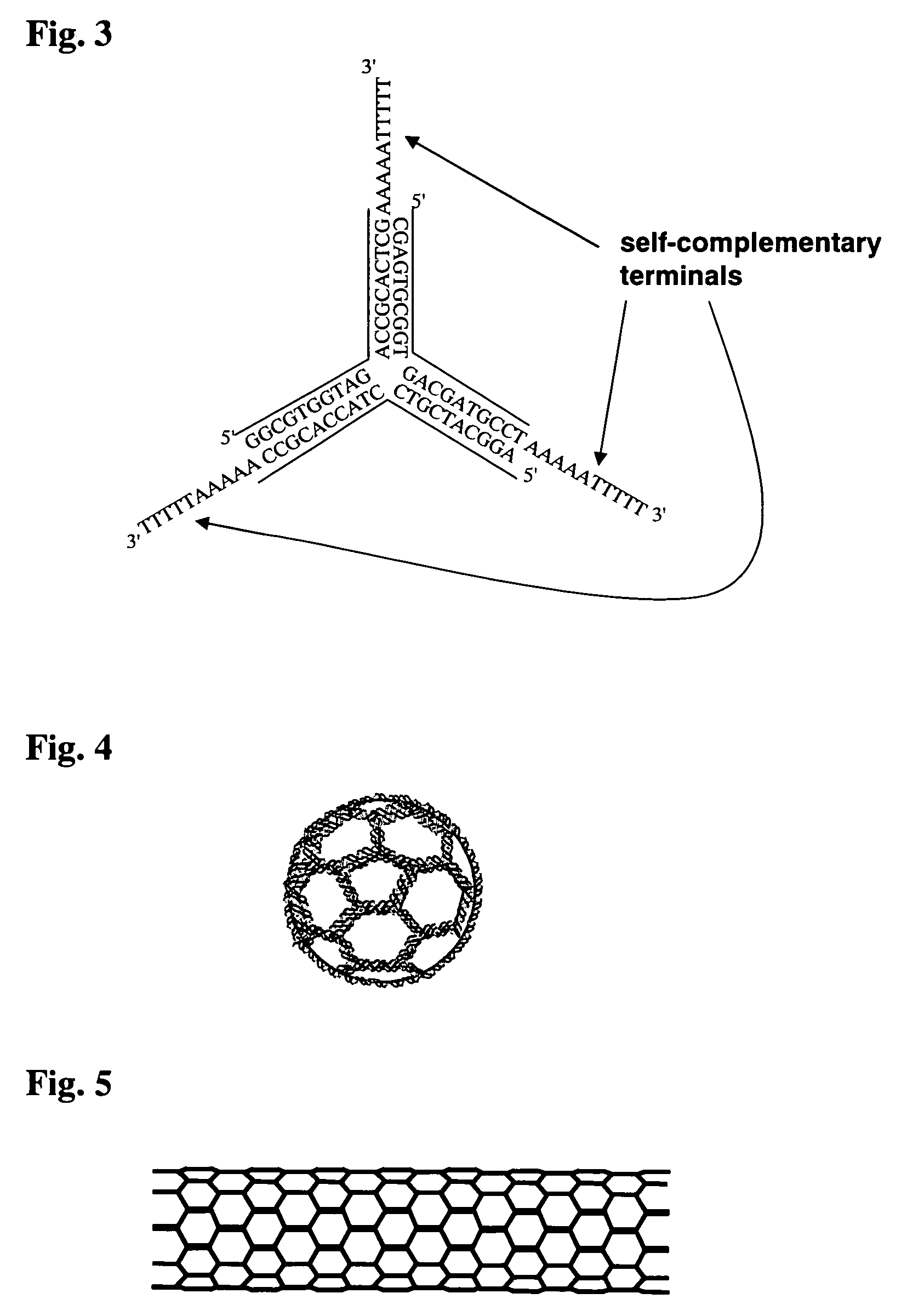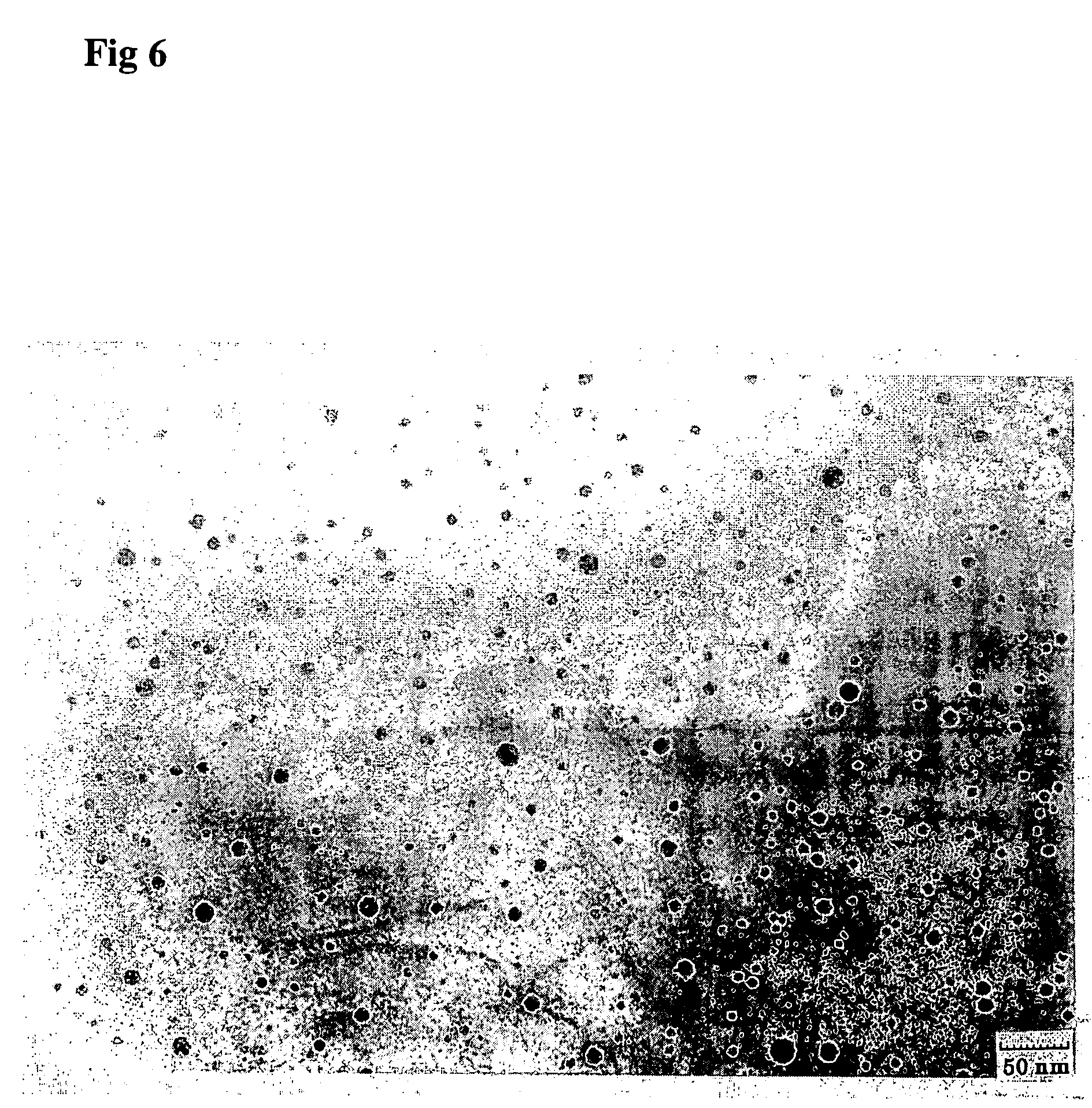Dna nanocage by self-organization of dna and process for producing the same, and dna nanotube and molecule carrier using the same
a dna nano and self-organization technology, applied in nanoinformatics, instruments, organic chemistry, etc., can solve the problems of high cost, complicated and time-consuming operations, and difficult to include nanoparticles such as proteins or the like in the interior
- Summary
- Abstract
- Description
- Claims
- Application Information
AI Technical Summary
Problems solved by technology
Method used
Image
Examples
example 1
[0063] Three types of 30-mer oligonucleotides with sequences shown in FIG. 2 were mixed in a 0.5 M NaCl aqueous solution at 10° C. to be the total oligonucleotide concentration=1 μM, and the solution was aged for 12 hours.
[0064] This solution was dropped on a TEM grid at 10° C., and the specimen was stained with uranyl acetate and observed with a transmission electron microscope. The results are shown in FIG. 6.
[0065] In FIG. 6, spherical assemblies with diameters of from approximately 20 to 70 nm were observed.
[0066] By dynamic light scanning (DLS) measurement, it was also confirmed that the assemblies with diameters of from 20 to 70 nm were constructed, as shown in FIG. 7. In the Figure, a peak is observed also in the vicinity of 700 nm in addition to from 20 to 70 nm, indicating that the cages are aggregated and the peak apparently appears.
[0067] From these experimental results, it is considered that the spherical DNA assemblies observed in FIG. 6 are constructed by hybridizi...
example 2
[0071] Three types of 30-mer oligonucleotides with the same sequences as in Example 1 were mixed in a 1 M NaCl aqueous solution at 10° C. to be the total oligonucleotide concentration=2 μM, and the solution was aged for 12 hours.
[0072] This solution was dropped on a TEM grid at 10° C., and the specimen was stained with uranyl acetate and observed with a transmission electron microscope. The results are shown in FIG. 9.
[0073]FIG. 9 reveals that the spherical assemblies with diameters of from approximately 30 to 50 nm were further organized into a network structure.
example 3
[0074] Three types of 30-mer oligonucleotides with the same sequences as in Example 1 were mixed in a 0.5 M NaCl aqueous solution at 10° C. to be the total oligonucleotide concentration=5 μM, and the solution was aged for 12 hours.
[0075] This solution was dropped on a TEM grid at 10° C., and the specimen was stained with uranyl acetate and observed with a transmission electron microscope. The results are shown in FIG. 10.
[0076] In FIG. 10, the spherical assemblies with diameters of from approximately 50 to 200 nm were observed.
PUM
| Property | Measurement | Unit |
|---|---|---|
| Temperature | aaaaa | aaaaa |
Abstract
Description
Claims
Application Information
 Login to View More
Login to View More - R&D
- Intellectual Property
- Life Sciences
- Materials
- Tech Scout
- Unparalleled Data Quality
- Higher Quality Content
- 60% Fewer Hallucinations
Browse by: Latest US Patents, China's latest patents, Technical Efficacy Thesaurus, Application Domain, Technology Topic, Popular Technical Reports.
© 2025 PatSnap. All rights reserved.Legal|Privacy policy|Modern Slavery Act Transparency Statement|Sitemap|About US| Contact US: help@patsnap.com



